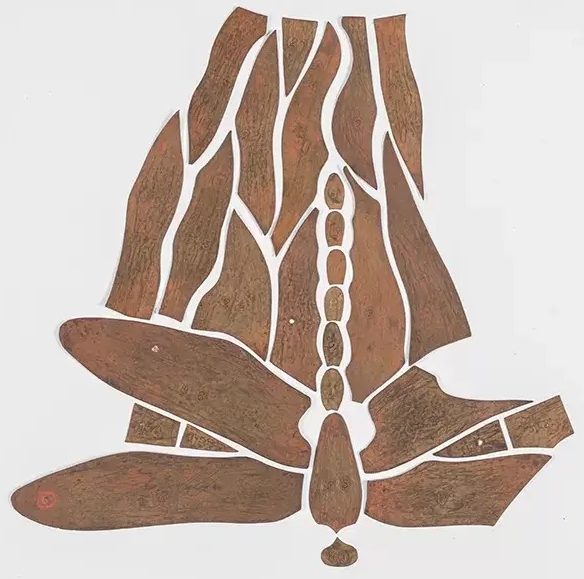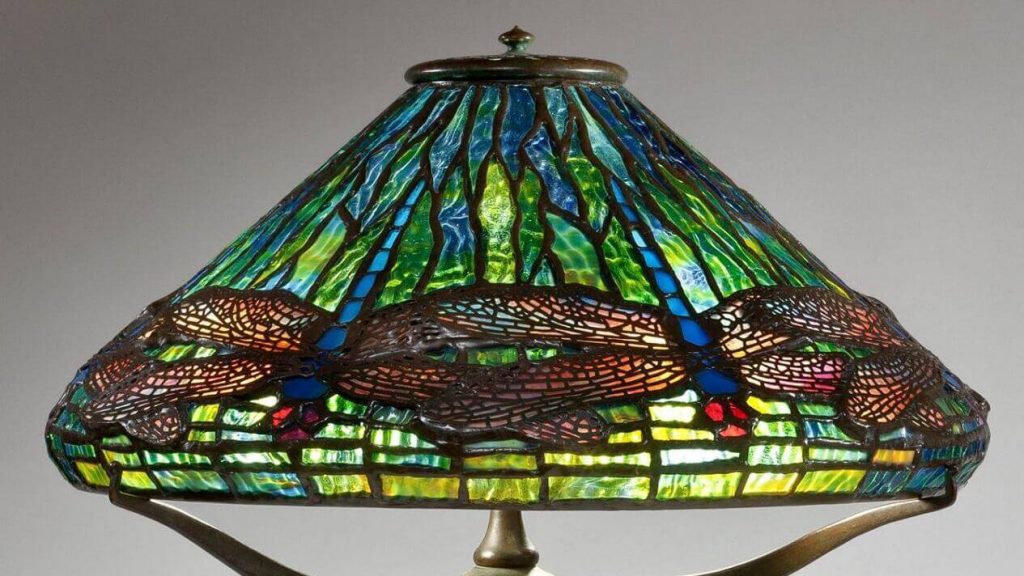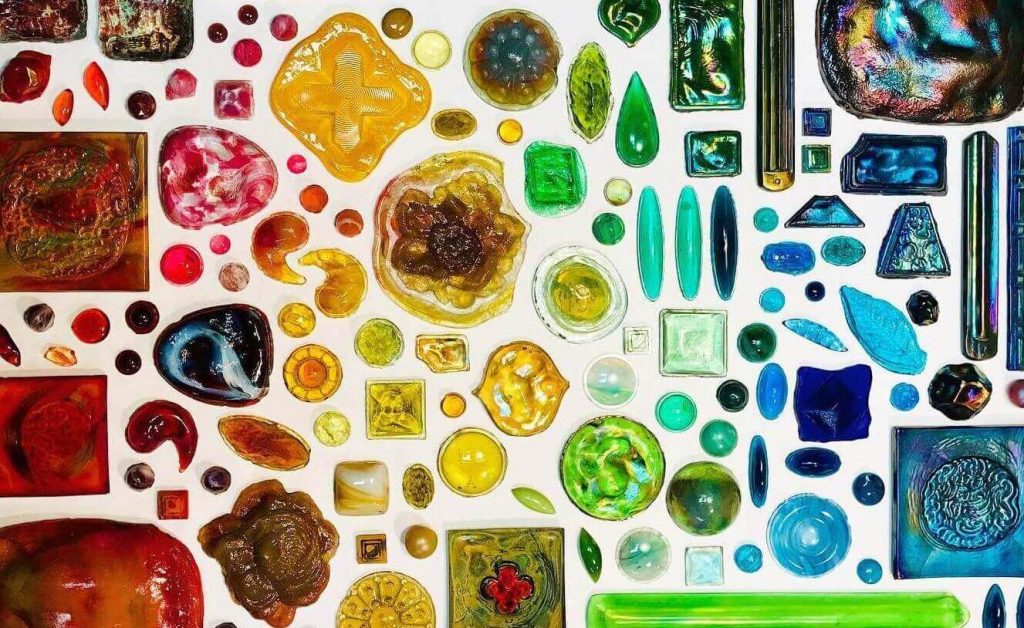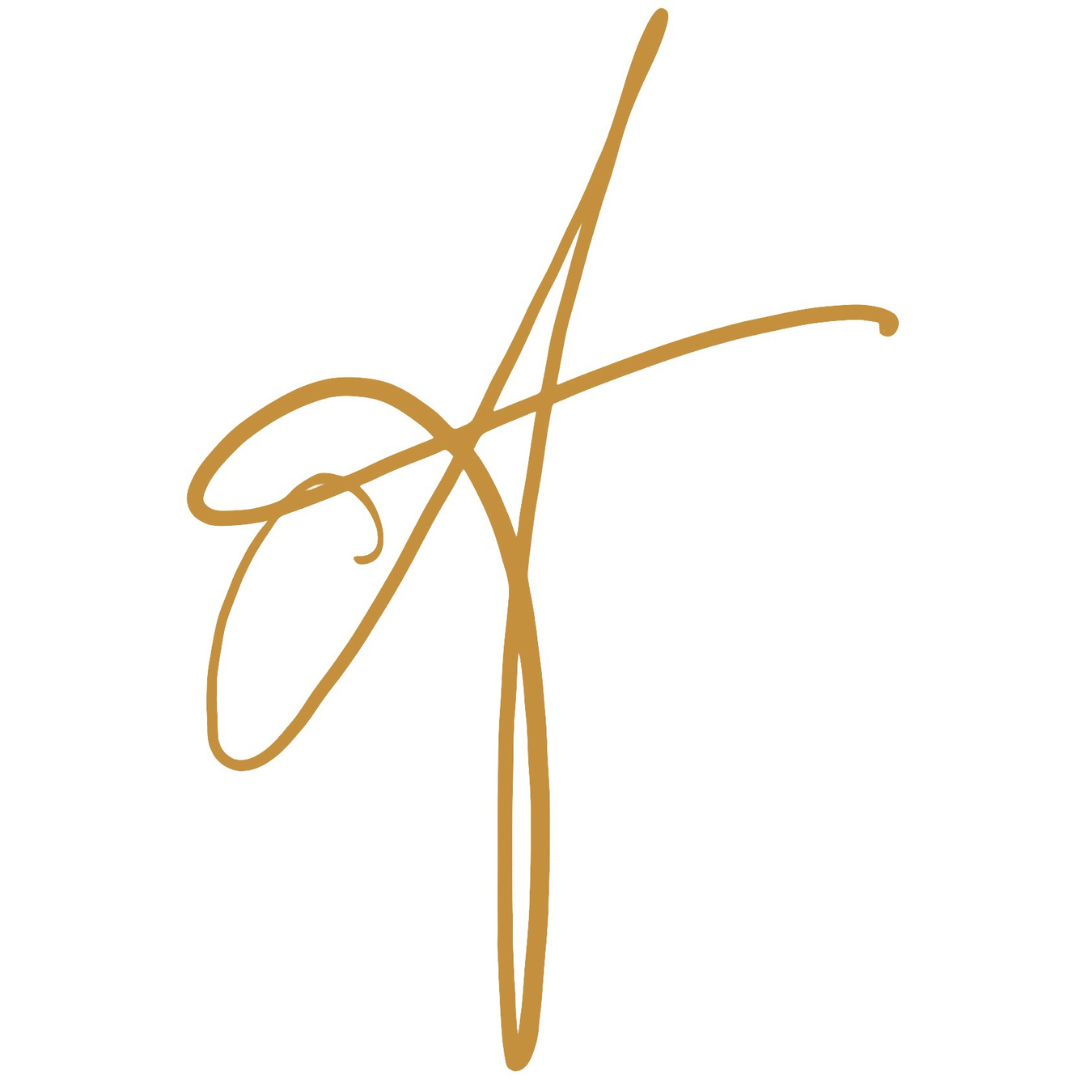

Blue-bodied dragonfly
Though fauna rather than flora, the Dragonflies are included in the flowered cones because they are life forms rather than geometric shapes. One may also cite the presence of vegetation in many of the Dragonfly shades.
The world-renowned Dragonfly design is incontestably the most popular of all those employed in Tiffany Lamps; no other has been used in such a wide variety of shades. It appears among the cones in both the 16″ and 20″ sizes, is well represented among the globes, and is outstanding in the category of shades with irregular lower borders.

Blue-Bodied Dragonfly Table Lamp, a Tiffany Studios lamp in The Neustadt Collection
The maximum diameter of the Small Dragonfly is 16″, which lessens to 15⅐” at the lower border because of the inward curvature of the apron. It is 6%” high and has a 3″ aperture. Below the rectilinear aperture row, the shade has two rows composed of uneven, pointed oblongs, arranged vertically. The bodies of the seven dragonflies, one in each repeat, extend through the second oblong row to its juncture with the first. There are four small glass pieces between the upper and lower wings and two on each side of the insect’s head. The three-row apron is incurved to such an extent that the last border row is only visible from below, not straight-on. Since the seven dragonflies, each with a wingspread of 94″, must fit within the 50″ circumference of the shade, adjoining wing tips are extensively overlapped.

Templates for Dragonfly Tiffany lamp shades provides the craftsman with unusual opportunities to show her skill and imagination.
The design provides the craftsman with unusual opportunities to show her skill and imagination. First, there is the insect itself, which she can endow with varicolored bodies, eyes, and wings. Then, since the shade is described by the Tiffany Studios as “Dragonfly and Water Design,” she is free to create any sort of stream or pond she prefers along with every kind of atmosphere in which the insect flies. The mood may range from sunny peace to sad foreboding.

Metal filigree used for Dragonfly and Poppy Tiffany lamp shades
The overlapping areas, raised above the surface of the shade, thus give a striking three-dimensional quality to a conventional flat pattern. The wings are covered with an intricate metal filigree which simulates their natural veining.

Blue-Bodied Dragonfly Table Lamp, a Tiffany Studios table lamp in The Neustadt Collection
This is an even more colorful shade; except for the insect’s wings and bodies, it is entirely made of rippled glass. The base note of the rippled background glass is light blue, seen most purely in the upper oblong row. In the center of the shade, the blue is mixed with yellow and green, creating the aura of an impending storm. This is enhanced by the seeming pulsation of the wavy surfaced glass segments. The same colors extend downward between the wings, into the three apron rows. There is no aperture row. The refraction of light from the rippled glass is extraordinary in its brilliance.

Tiffany lamp jewels are used for the insect’s eyes and original Tiffany lamp decor
Thorax and abdomen are purplish-blue; the tails are green-blue and the heads as well as the unjeweled eyes are crimson red. The dragonflies’ eyes are made from jewels or from flat glass. The wings are a less vivid red, mottled with gray, blue, and purple.
